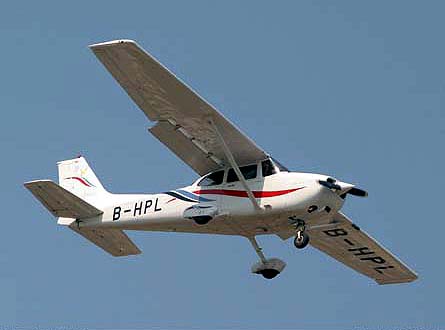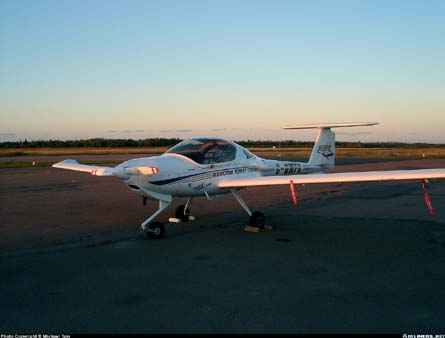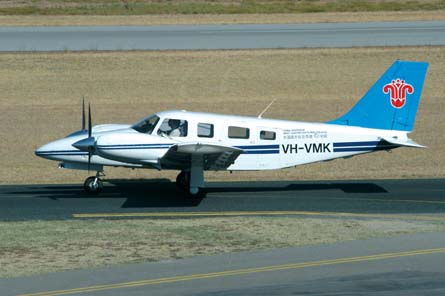By Aimee Turner in London
Runaway aviation growth in China has brought its own share of well-documented industrial issues: not only are airlines finding it challenging to source sufficient numbers of pilots to actually fly aircraft, but the demand on the training infrastructure is also forcing authorities to look beyond home-grown solutions.
But the natural consequence of that explosive growth is greater upstream potential for global outsourcing to foreign training organisations and tempting growth opportunities for training hardware providers.
Mike Doiron, principal and chief executive of Moncton Flight College, has reasons to be cheerful. The first group of 30 Beijing university student pilots is scheduled to touch down in Canada this month to be followed by new groups approximately every 90 days.
|
|---|
| Cessna's 172 Skyhawk is benefiting from the training boom in China |
Operating from the Greater Moncton International airport in Dieppe, New Brunswick, the school has a long history of flight training in Atlantic Canada, having put more than 15,000 aspiring pilots, from over 60 countries through their paces.
In May, it landed a two-year contract with the Beijing University of Aeronautics and Astronautics valued at over C$10 million ($8.9 million) to train 150 pilots over the next two years. This new partnership represents the university’s first independent venture since it has for the past 20 years been conducting pilot training jointly with China Southern Airlines.
Indeed, if all options are exercised over the plan, Doiron believes the contract could be worth C$60 million over a five-year period with upwards of 800 pilots.
“We are looking at this as a five-year exercise, and working hard to stay in the game longer term. For now, five years is a realistic goal, although China is perhaps going to take anything up to 10 years to attain its domestic requirement. For that to happen, they need to change their traditional training methodologies, become much more focused and lower attrition rates to something like our standard 2% target,” says Doiron, who adds that China’s efforts here should not be estimated. “The Chinese are very good at getting things done when they decide to do something and drive development. Getting up to the scale and standard could, in fact, take as little as three years,” he says.
Doiron admits the contract was the result of years of preparation and months of negotiations, with recent approval by the Civil Aviation Authority of China (CAAC) to train Chinese pilots representing the last major hurdle the school had to pass.
The CAAC has long recognised that the rapid growth in the commercial aircraft fleet is leading to a shortage of pilots with recruitment needs pegged a few years ago at 12,000 for the period between 2004 and 2010. The fact that China’s two certified pilot training schools could train only 850-900 pilots a year – with the CAAC Flying College in Sichuan accounting for 600-700 and the China Southern West Australian Flying College near Perth in Australia training 150-200 – heralded a proliferation of privately owned commercial training schools.
New jobs
Doiron says the natural effect of this contract win means new instructor and aircraft maintenance jobs. In terms of training aircraft, he says that the Diamond Aircraft DA20 as the school’s basic trainer together with the DA40 and DA42 twin will remain core components, adding that plans are already under way to acquire an additional 20 aircraft over the next two years.
In fact, a sounding of the training hardware industry tends to point to a recognition that while there is plenty of potential there, strangely for a market set to explode in air transport terms, it is still a case of steady as she goes.
|
|---|
| Moncton uses the Diamond DA20 as its basic trainer |
Cessna’s Chris Bogaars, who heads Far East and Asia Pacific propeller sales, frames the issue: “The Chinese over the last four to five years have recognised the desperate situation they are in, in terms of commercial pilot provision, and are making a concerted effort to increase the physical infrastructure to allow more pilots to be trained. Let’s be clear, at five times the population size of the USA, they still only have one twentieth of the number of US pilots.”
One triumph recorded last year was the decision by one of the CAAC’s three training arms – the Civil Aviation Flight University of China (CAFUC) in Szechuan – to transition to an all-Cessna fleet with the delivery of the first of 42 172 Skyhawks to be followed by six Citation CJ1s. With the university’s student roll set to double in the coming years to 1,500 training pilots, that is a significant calling card within the China trainer environment.
Cessna’s Todd Duhnke, director of international sales, sounds a note of realism however, counselling against excessive optimism. “For a business that is selling 1,000 units, an order for 42 aircraft does not make a great difference, but still it’s heartening for the future,” he says.
Again, while the debate rages about the traditional prescribed speed of transition from ab initio training through to fully fledged jet pilot status, Duhnke quietly asserts: “The ability to advance quickly from a Cessna 172 through to a CJ1 paths plays right into our hands.”
Molly Martin Pearce, New Piper’s director of dealer relations and sales, admits that over the past seven years, sporadic would be the adjective she would choose to describe sales into the China market. “It’s not so easy to forecast, but we are seeing sales to a handful of Chinese flight schools of between 10-20 aircraft a year to add to our existing installed business already in China.”
New Piper lost out three years ago on a Chinese contract for up to 50 aircraft due simply to production issues caused by hurricane damage in the USA. “It did however demonstrate that there is demand out there and we are still committed to developing that market,” says Martin Pearce.
She predicts that the future stars within its four trainer aircraft panoply could well be the Seminole primary twin and the higher-performance Seneca, which could be a cornerstone for pilot training specifically designed for modern commercial air transport.
“The Chinese market is still evaluating glass cockpits, but since new airliners will have advanced avionics, combined with the speed of pilot throughput, the need to expose them to advanced avionics and, combined with the speed of airline expansion, you would expect interest here,” she says.
This last point raises another problem for jet aircraft manufacturers: if there are not enough human resources in the cockpit, then the fantastic growth potential is likely to be dampened. Airbus, for example, by the end of March, had 264 aircraft operating in China, taking the company’s market share from 7% in 1995 to the current 32%.
Industrial altruism
In April, in an unprecedented fit of not entirely unexpected industrial altruism, the European aircraft manufacturer said it would extend its 10-year $80 million investment in aircrew training and support in China for another 20 years with the China Aviation Supplies Import and Export Group Corporation.
The following month Airbus donated an A320 training device to CAFUC to boost its capabilities. The college took delivery of the Thales A320 flight and navigation procedures trainer (FNPT), a fixed-base simulator with simplified visual system, enabling it to set up pre-qualification courses related to transition training of pilots. Until then, students at the college were forced to go to other centres for such A320 training.
Pilot training provider GE Commercial Aviation Training (GECAT) says it too will support the delivery of the large numbers of A320 and Boeing Next Generation 737s, including many of those leased from its own parent company GE Commercial Aviation Services (GECAS) with long-term training provision.
GECAT’s Hong Kong training centre has just gained CCAR 142 approval from the CAAC, certificating it to conduct initial and transition training for Chinese airlines, only six months after the company received approval as a type rating training organisation.
The company’s sales and marketing director Nick Lockwood says: “It is GECAT’s intention to participate in this exciting growth phrase, and we aim to work with airlines partners in catering for their long-term training demand. GECAT is aiming at the highest quality of instruction and has engaged the services of a chief instructor with over 20,000 hours of simulator instruction, which includes 5,000h of instruction on Airbus fly-by-wire types.”
Modern Klondike
|
|---|
| China's two certified flying schools - including the China Southern West Australian Flying College - can train only 850-900 pilots a year |
Cessna’s Dohman sums up the situation: with modern Western aircraft comes the need for modern Western training support, a Klondike of modern aviation.
Gauging the difference between modern China’s requirements with the distinctly lukewarm reception from the Chinese authorities when the Cessna 152 went into production 32 years ago, Dohman says that demand in China for a Western training infrastructure essentially forms part of a geopolitical coming of age for the nation.
“It really is a recognition of the fact by the Chinese that if they want an aviation industry as developed as that of the Western capitalist world, then they need the competitive training infrastructure that the West enjoys,” he says.
Source: Flight International


























